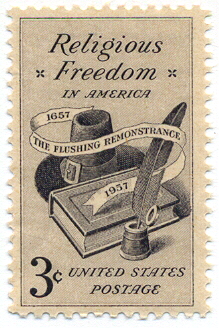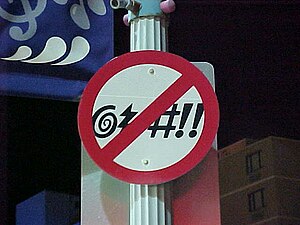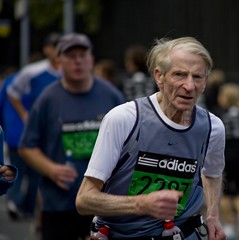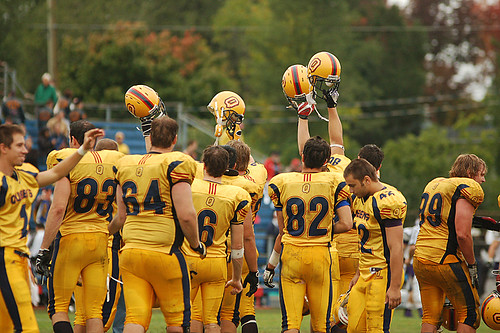 It is the beauty and privilege of living in a country like the United States of America – the freedom of the people to speak freely and maintain their own religious faith and convictions. I fully support an individual’s choice of faith and belief systems, even as they differ from my own or anyone else’ beliefs. I think that as intelligent human beings we can have our faith, and agree to disagree on what it means to the individual in the meantime. Frankly, I enjoy discussions of religion because it gives me a greater insight into the world (and it’s people) and provides me with varying and unique perspective of life on the planet.
It is the beauty and privilege of living in a country like the United States of America – the freedom of the people to speak freely and maintain their own religious faith and convictions. I fully support an individual’s choice of faith and belief systems, even as they differ from my own or anyone else’ beliefs. I think that as intelligent human beings we can have our faith, and agree to disagree on what it means to the individual in the meantime. Frankly, I enjoy discussions of religion because it gives me a greater insight into the world (and it’s people) and provides me with varying and unique perspective of life on the planet. The issue of religion and religious freedom once again came to the forefront recently in the media. There was a seemingly inexplicable hue and cry from many people in this country regarding President Obama’s religious convictions. Is he a Muslim? Isn’t he? Better yet, do we really care? Last I looked, the Constitution gives people the freedom to participate in their own religious beliefs, and that freedom would also extend to the President. So if the President of the United States is Catholic – or Hindu – or a Scientologist, for that matter – does he not have the right to do so? Worse yet, why would anyone use that as some form of “reasoning” that he shouldn’t be in the office? And even beyond that, somehow the debate over his religious beliefs provoked fear in many.
This could have all simply been a blip on the media airwaves. But in my humble opinion, the level of religious intolerance appears to have magnified since that time. Perhaps I am getting more sensitive to it, and perhaps I am more offended by it. Or both.
 The pundits use all sorts of platitudes when they describe a game like the 2009 Big 12 Championship. In the past 12 hours, I’ve heard a number of them - “it all counts as a win in the win column” or “winning ugly is still winning”.
The pundits use all sorts of platitudes when they describe a game like the 2009 Big 12 Championship. In the past 12 hours, I’ve heard a number of them - “it all counts as a win in the win column” or “winning ugly is still winning”. All true.
And when everything was said and done last night in the Longhorn’s 13 – 12 victory over the Nebraska Cornhuskers, it only took one second on the clock to seal the deal.
But it was the previous 59 minutes and 59 seconds that were so disturbing, and gave the nation of voters (Heisman and BCS alike) plenty of reasons to wonder if the Longhorns should be heading to the national championship game – or not.
There are two things I know from last night’s game. One is that Texas has a spectacular defense - a national caliber defense without doubt. And the other thing I have had re-affirmed is the utterly anemic offensive play-calling that continues to hound the Horns.
First, the defense. Spectacular. Phenomenal. Stifling. What other words are needed to describe it? They gave up just 106 yards to the Huskers – a total of 39 rushing yards and 67 passing yards. The season-low for Nebraska prior to this game was 180 yards. They limited Nebraska to only 5 first downs during the game. Three interceptions. And only four field goals scored against them. I would say that this was a statement game to tell the nation that this defense is truly Pasadena-ready.
But then we have to look at the other side of the ball. And what I am seeing isn’t good.
 The story was all over the news. On May 11, 2009, a 72 year-old woman, Kathryn Winkfein, was pulled over by a Travis County deputy constable for driving 60 mph in a 45 mph construction zone. The woman refused to sign the citation. She became belligerent with the officer, and she was warned 5 times that she would be arrested. Then, she was tasered.
The story was all over the news. On May 11, 2009, a 72 year-old woman, Kathryn Winkfein, was pulled over by a Travis County deputy constable for driving 60 mph in a 45 mph construction zone. The woman refused to sign the citation. She became belligerent with the officer, and she was warned 5 times that she would be arrested. Then, she was tasered.
Sounds a bit horrific at first, doesn’t it? Hold on a second - you are going to taser a 72 year-old, 4-foot-11 great-grandmother? Did I hear that correctly?
Winkfein was deemed to be in the wrong, under the laws that protect us all, and an officer did what he felt was necessary within his responsibility. An internal investigation found no policy violations. The deputy constable in question was cleared of any wrongdoing. Should be over, right?
Well, it’s not quite so simple. Take a look here:
 I am starting to think that our currently held beliefs on running and, specifically, running a marathon, are creating a new type of health risk.
I am starting to think that our currently held beliefs on running and, specifically, running a marathon, are creating a new type of health risk.
The November 23 issue of the Austin American-Statesman has an article by Fit City writer Pamela LeBlanc entitled “Are slow runners ruining marathons?”. In it she refers to a recent article in the NY Times on the same topic. Here is the original NY Times quote:
“From 1980 to 2008, the number of marathon finishers in the United States increased to 425,000 from 143,000 … In 1980, the median finishing time for male runners in United States marathons was 3 hours 32 minutes 17 seconds, a pace of about eight minutes per mile. In 2008, the median finishing time was 4:16, a pace of 9:46. For women, that time in 1980 was 4:03:39. Last year, it was 4:43:32”.
She states that “making an effort to lead a healthy lifestyle is important, and having a goal like a marathon — whether you run it all or walk part of it — can help”. She then states that “proper training is crucial to prevent injury”.
And therein lies the quantum leap. I would totally agree with LeBlanc as she makes note of two critical issues – fostering active lifestyles, and doing so safely by preventing running injuries. But is it possible that the increased levels of participation – and the slower overall pace of the runners – combined with a high rate of running injuries, could actually be creating a greater health risk?
 Touchdown! Field Goal! We Want The College Bowl!
Touchdown! Field Goal! We Want The College Bowl!
At least that’s what we always used to say during football season. That was back in a bygone era in which the Canadian university football championship was, indeed, called the College Bowl.
Yes, in Canada they understand the value of a football playoff system, which has been in effect for as long as I can remember. The BCS and some annoying college presidents would do well to take a visit to the north to witness how great it actually works. A fine perspective by writer Andrew Bucholtz can be found here.
But I digress. Back to today’s excitement!
The Vanier Cup, the trophy given to the Canadian university football national champion, is now on it’s way to Kingston. The Queen’s University Golden Gaels, my alma mater, beat the Calgary Dinos 33 – 31 this afternoon. They were down 25 – 7 at halftime, and stormed back to lead 33 – 25 late in the fourth quarter. Final: 33 – 31. It was a 17 year wait, but it was well worth it.
 Rock and roll started as a branch of the blues tree. It was built with the same three chord structure and the same raw emotion as the blues from the Delta. The roots can be found in Robert Johnson, and the tree limb spread out up the Mississippi to Chicago, and points far beyond.
Rock and roll started as a branch of the blues tree. It was built with the same three chord structure and the same raw emotion as the blues from the Delta. The roots can be found in Robert Johnson, and the tree limb spread out up the Mississippi to Chicago, and points far beyond.
I don’t think that anybody ever really envisioned rock and roll being complex – three chords and lyrics that mention the basic desires driven by testosterone, sweat, and fun. It began in the juke joints, and ended up appearing in the censored gyrations of Elvis’ hips. But the beauty of the genre is its elegance in its own sheer simplicity. And there are still some practitioners of what I would call the “art” of rock and roll – those that remind us of how raw and simple and powerful and fun good, straight-up rock and roll really is.
AC/DC at the Frank Erwin Center – 36 years after they started – was a not-so-subtle reminder of the beauty and power that is primal rock and roll. Angus Young and friends reminded me of this after all these years. Rock doesn’t have to be intellectual, nor does it have to be epic – it can be simple, guttural, visceral – and AC/DC sure know how to get it done.
 Principles define training. Principles can lead you to personal best performances, injury prevention, and health – if they are simply applied correctly.
Principles define training. Principles can lead you to personal best performances, injury prevention, and health – if they are simply applied correctly.
Historically, running has a social and coaching culture that would have you believe that very diverse methods are required to train for different events. For example, most would assume that training for the 800 meters on the track would be in complete opposition to training for a 100 mile trail run. One is 200 times longer than the other. Currently-held beliefs would tell us that these events utilize different “energy systems”, that one event is anaerobic while the other is aerobic, that one event is for those with lots of fast twitch muscle fibers while the other is only for those with a predominance of slow twitch fibers, that perhaps a specific periodization or structure of training is required, or even more commonly, that perhaps a certain number of miles of training are necessary.
These traditional methods make some assumptions that, sadly, have not stood the test of time or science.
Much of the traditional thinking assumes that the cardiovascular system is the primary limiter of performance – and thus the primary aspect to address in training. But as we’ve built a body of knowledge in the sports sciences, this has been found to not be the case. The central nervous system and neuromuscular system are the primary limiters of performance, and thus issues such as power output should define the training plan. The greater the power output (at any given distance), the faster you go.
What does this mean from a practical application?
I have coached runners of all skill levels and paces, and through a wide variety of event distances. And the one common element that links events like the 800 meters and a 100 mile run is that the training principles are the same. Yes, the same.
 "Running Injuries: Etiology And Recovery- Based Treatment" (co-author Bridget Clark, PT) appears in the third edition and fourth editions of "Clinical Orthopaedic Rehabilitation: A Team Approach" by Charles Giangarra, MD and Robert C. Manske, PT.
"Running Injuries: Etiology And Recovery- Based Treatment" (co-author Bridget Clark, PT) appears in the third edition and fourth editions of "Clinical Orthopaedic Rehabilitation: A Team Approach" by Charles Giangarra, MD and Robert C. Manske, PT.
 Allan Besselink, PT, DPT, Ph.D., Dip.MDT has a unique voice in the world of sports, education, and health care. Read more about Allan here.
Allan Besselink, PT, DPT, Ph.D., Dip.MDT has a unique voice in the world of sports, education, and health care. Read more about Allan here.
 Top 5 finalist in three categories: "Best Overall Blog", "Best PT Blog" and "Best Advocacy Blog".
Top 5 finalist in three categories: "Best Overall Blog", "Best PT Blog" and "Best Advocacy Blog".